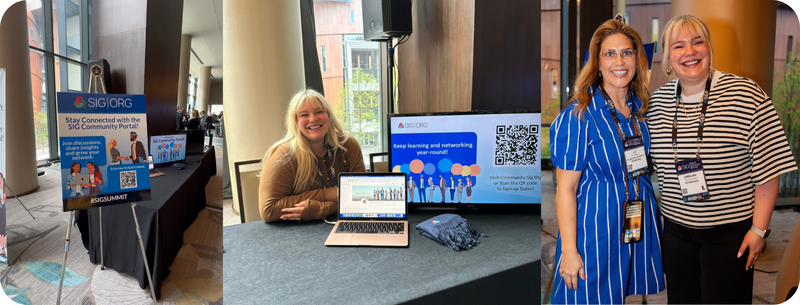Storytelling has been a core part of human culture for thousands of years. Whether through myths, folktales, or shared experiences, stories help us make sense of the world and connect with others on a deeper level. In today’s business landscape, storytelling has taken on a new role as a powerful tool for building brand communities.
When brands use storytelling effectively, they can create lasting emotional connections, increase engagement, and foster loyalty. For businesses looking to grow a connected brand community, mastering the art of storytelling is key.

In this post, we’ll explore how you can use storytelling to build a stronger, more connected community for your brand. Let’s dive in!
1. Make Your Audience the Hero of the Story
One of the most effective ways to build a strong brand community is by making your audience the central figure in your storytelling. Think about it this way—your brand is the guide, while your community members are the heroes embarking on a journey. They are overcoming challenges, achieving their goals, and growing, thanks to the support of your brand.
Example:
A powerful example of this is Nike’s famous “Just Do It” campaign. While the campaign features professional athletes, the real hero of the story is every individual striving to overcome their personal challenges. Nike is there as a guide, but the story is about the runner pushing through fatigue or the weekend warrior trying to improve. The message resonates because it’s not about the brand itself; it’s about the personal triumph of the customer.
You can replicate this idea by sharing stories of your community members who have achieved success, grown their skills, or made progress in their personal or professional lives through your product or service. Highlight their journey, challenges, and accomplishments, showing that your brand is there to support them at every step.
2. Communicate Your Brand Values Through Storytelling
Your brand’s values are the foundation of your community. People connect with brands that share their beliefs, principles, and goals. Storytelling is an excellent way to communicate these values in a meaningful and impactful way.
Example:
Consider Dove’s “Real Beauty” campaign. Dove didn’t just talk about beauty products; they told stories of real women from around the world and their struggles with body image. By doing so, Dove communicated its core value of redefining beauty standards and promoting self-acceptance. The campaign became a movement because it connected with people on a deeply personal level.
Your brand can do the same by identifying the core values that matter to your audience. What does your brand stand for? Is it sustainability, diversity, innovation, or community empowerment? Once you’ve identified your key values, share stories that bring these values to life in an authentic way. These stories could include customer experiences, company initiatives, or community projects that reflect your brand’s mission.
3. Use Emotion to Build Strong Connections
Emotion is a powerful element in storytelling. People remember stories that make them feel something, whether it’s happiness, inspiration, empathy, or even sadness. Emotional stories help your audience connect with your brand on a deeper level and are more likely to stick in their minds.
Example:
A compelling example is Apple’s holiday ad campaign, “Misunderstood,” which tells the story of a seemingly disconnected teenager who, instead of ignoring his family during the holidays, secretly creates a heartwarming video capturing their moments together. The ad draws viewers in with the emotional twist, showcasing Apple’s product as a tool for connection rather than just technology.
When telling your brand’s story, think about how you can evoke emotion. Consider sharing personal customer stories, team member journeys, or real-world examples of how your brand has made a difference in people’s lives. The key is to be authentic and genuine—people will see through forced emotion.
4. Show, Don’t Just Tell. Incorporate Visual Storytelling
Visuals play a significant role in modern storytelling. In fact, people process visuals 60,000 times faster than text, making images and videos an essential part of any storytelling strategy. By adding visuals, you make your stories more engaging and easier for your audience to relate to and remember.
Example:
Take a look at Airbnb’s “Wall and Chain” animated short. The ad tells the story of two former guards from opposite sides of the Berlin Wall who reunite and become friends through an Airbnb stay. The simple yet impactful animation combined with a powerful narrative helped create a memorable and emotional connection with viewers, showcasing how Airbnb fosters human connections across boundaries.
You can enhance your brand stories by using visuals to complement your message. Whether it’s customer-generated content, behind-the-scenes videos, or infographics that highlight key achievements, visuals can breathe life into your story and make it more impactful. Make sure the visuals align with your brand identity and message for a cohesive experience.
5. Use Relatable Characters to Build Empathy
At the heart of every good story are characters your audience can relate to. The best characters aren’t flawless heroes—they’re complex, multidimensional, and face real struggles. In your storytelling, the “characters” can be your customers, employees, or even your brand itself.
Example:
Brands like Patagonia are masters of relatable character storytelling. Patagonia often highlights outdoor adventurers and environmental activists who share their experiences of overcoming challenges to protect nature. These characters are not superheroes; they’re ordinary people with extraordinary passion, which makes their stories resonate deeply with the audience.
For your brand, highlight relatable characters who align with your audience’s values and experiences. Showcase their journeys, struggles, and triumphs, making sure to show both their strengths and vulnerabilities. This will help your community see themselves in your stories and build deeper connections with your brand.
6. Incorporate Conflict and Resolution
Every story needs tension to be compelling. Without conflict, a story feels flat and lacks the elements needed to keep your audience engaged. In brand storytelling, conflict can come in the form of challenges your audience faces and how your brand helps them overcome these hurdles.
The resolution is equally important. Once you’ve identified the conflict, show how your brand or community provides the solution. This not only keeps your audience engaged but also demonstrates the value of your brand in a tangible way.
Example:
Consider Nike’s storytelling approach in their campaigns featuring athletes like Serena Williams. The conflict is often the challenges these athletes face, grueling training, injuries, or setbacks, and the resolution is their triumph over these obstacles. Nike’s brand is positioned as the partner that helps these athletes achieve greatness, and the audience is invited to share in that journey.
In your brand’s stories, identify the common challenges your community faces. Maybe it’s time management, career growth, or balancing work and life. Present your brand as the tool or guide that helps them resolve these issues, showing that your brand is here to support them every step of the way.
7. Be Authentic and Transparent
In a world full of polished marketing messages, authenticity is what sets you apart. People can easily spot inauthentic stories or over-exaggerated claims. For your storytelling to resonate, it needs to be true to your brand and values.
Transparency is also key. Be open about your brand’s journey, including your failures and lessons learned. People don’t expect perfection—they want to see the real story behind your brand.
Example:
A great example of authenticity in storytelling comes from the brand Everlane. Everlane built its reputation on “radical transparency,” openly sharing the true cost of their products and the working conditions of their factories. This transparency allowed them to build trust with their community, which has become a key part of their brand identity.
For your brand, be sure to keep your stories real and relatable. Avoid making your brand the “perfect” solution and instead show how your community members and customers have grown, learned, and improved with your brand by their side.
8. Share Your Story Across Multiple Channels
Once you’ve crafted your brand stories, it’s essential to share them widely. Different members of your community consume content in different ways—some prefer social media, while others engage with blogs, email newsletters, or video platforms.
To maximize your reach, share your stories across a variety of platforms and tailor your storytelling to fit the format. For example, a long-form blog post might be condensed into a quick social media post with a link back to your website. Or you could turn a customer success story into a video testimonial or a case study.
Example:
One of the most successful multichannel storytelling campaigns is Coca-Cola’s “Share a Coke.” The campaign started with personalized Coke bottles and spread across social media, traditional advertising, and user-generated content. It was a masterclass in reaching audiences wherever they are and creating a cohesive narrative across platforms.
For your brand, make sure your story is shared consistently across your website, social media, email marketing, and other channels where your community engages. Each platform can offer a unique way to present your story while staying true to your core message.
Conclusion
Storytelling is much more than a marketing buzzword—it’s a proven way to build a stronger, more connected brand community. By putting your audience at the center, communicating your values, using emotion, and sharing stories across multiple channels, you can create deeper relationships with your community.
At Networked, we believe in the power of storytelling to build vibrant, engaged communities. Our platform offers all the tools you need to create and share your brand stories, empowering your community to connect, grow, and thrive under your brand.




